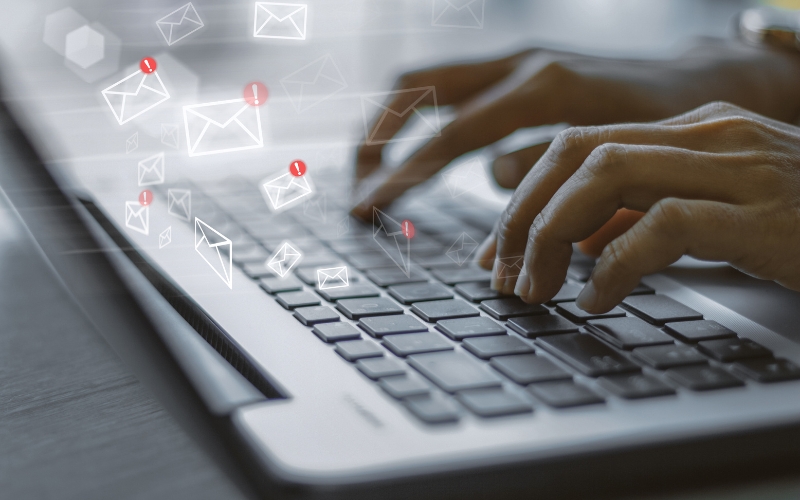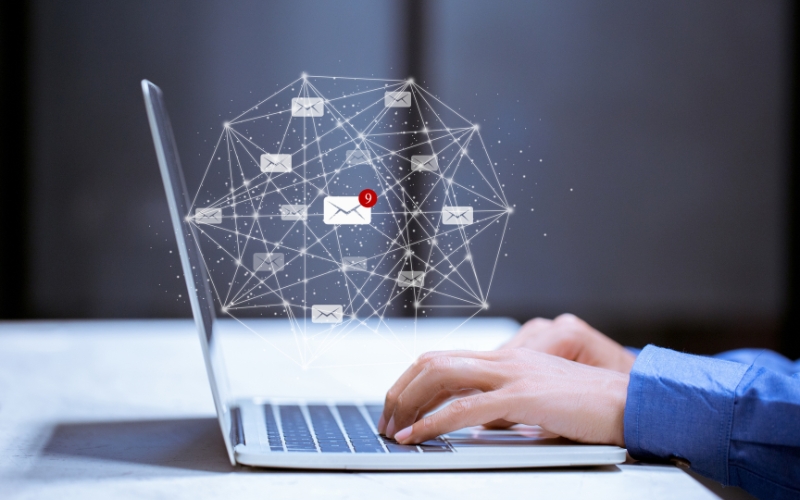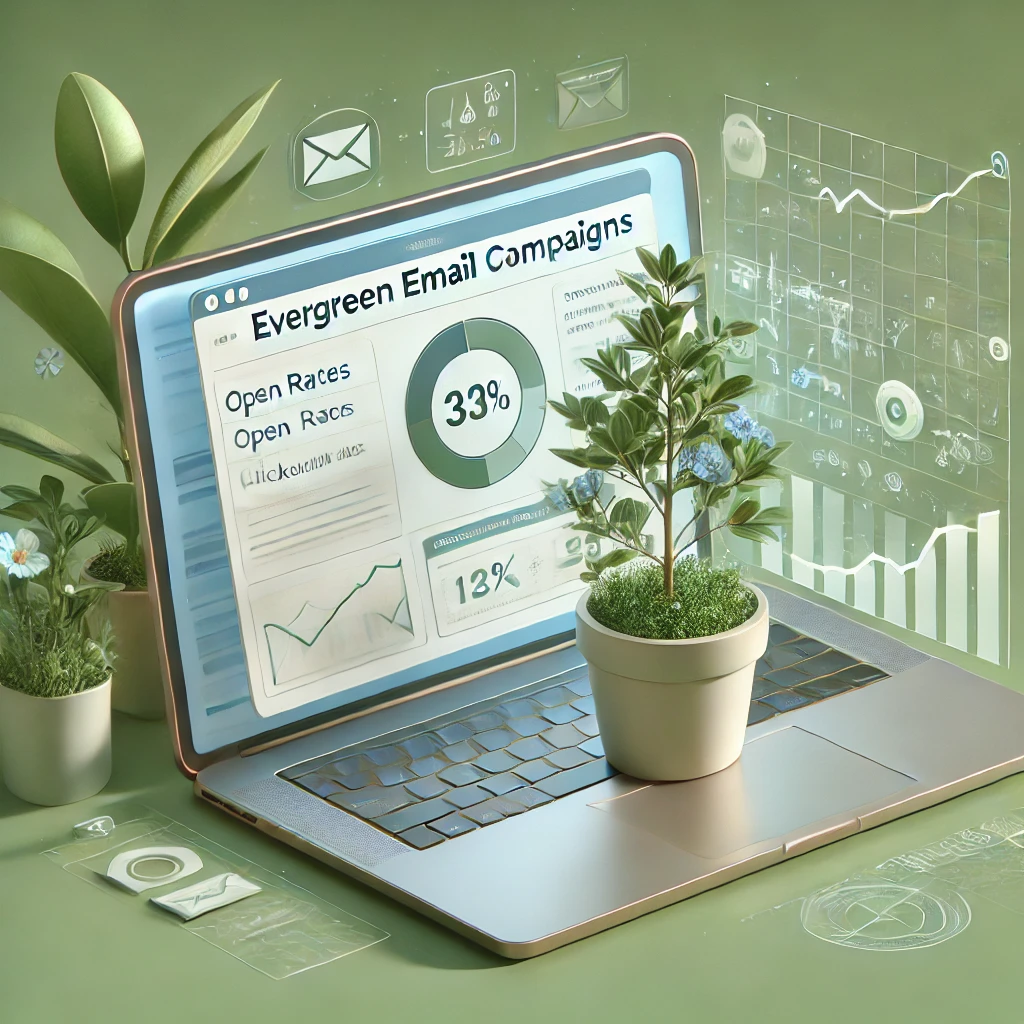Evergreen email campaigns are a powerful tool for businesses looking to engage with their audience over the long term. Unlike time-sensitive campaigns, evergreen emails are designed to deliver valuable, relevant content that can be reused and remain effective over time. Whether your goal is to nurture leads, build relationships, or drive conversions, creating and maintaining evergreen campaigns can yield lasting results. In this article, we’ll explore how to craft timeless content, build automated email sequences that nurture leads, and measure and optimize your campaigns for continuous success.
Crafting Timeless Content: How to Design Emails That Remain Relevant

Creating evergreen email campaigns that remain effective over time begins with crafting timeless content. Evergreen content is designed to stay relevant regardless of when it is sent, making it ideal for campaigns that you want to run continuously. Instead of focusing on promotions or trends that may lose relevance after a short period, evergreen emails offer long-lasting value to your subscribers. The goal is to create content that your audience will find useful at any time, ensuring it works for you well into the future.
The Importance of Creating Content That Isn’t Time-Sensitive
One of the most significant advantages of evergreen email campaigns is their ability to be repurposed over time. Unlike time-sensitive promotions or seasonal content, evergreen emails don’t require frequent updates or adjustments. This makes them an excellent investment for businesses that want to maintain engagement with their audience without constantly creating new material. For example, a tutorial on how to use your product or a guide to solving common industry problems will remain relevant for a long time, as the information is not tied to a specific season or trend.
Time-sensitive content, such as promotional offers or seasonal messages, might only have a short window of relevance, leading to wasted effort after the promotion ends. Evergreen content, on the other hand, can be sent to your subscribers year-round, bringing consistent value and helping nurture relationships over time.
Using Educational, Informative, or Evergreen Product-Related Content
To ensure that your emails stay relevant, focus on content that is educational, informative, and product-related. Educational content—such as how-to guides, tips, or resources—provides lasting value because it addresses topics or challenges that your audience faces regularly. By offering practical advice or expert knowledge, you demonstrate your value as a trusted resource, which can strengthen customer loyalty and drive engagement.
For example, if you sell fitness equipment, you might create a comprehensive guide on “How to Set Up a Home Gym,” which will remain useful to your subscribers over time. This type of content doesn’t become outdated, and your audience can refer back to it whenever they need it. Similarly, product-related content that highlights the benefits, features, or usage tips of your products also remains evergreen. An email explaining the various uses of your products, how they solve common problems, or highlighting customer success stories provides ongoing value that doesn’t depend on trends.
Examples of Content Types for Evergreen Email Campaigns
There are several types of content that work exceptionally well in evergreen email campaigns:
- How-to Guides and Tutorials: Step-by-step instructions or video tutorials on how to use your products or services can remain relevant for a long time. These guides can help your audience solve common issues or enhance their experience with your brand.
- Product Tips and Best Practices: Offering helpful tips on how to get the most out of your products will be useful to your subscribers regardless of when they read the email. For example, tips on maintaining a product, troubleshooting common problems, or optimizing its features.
- Resource Lists or Checklists: Curated lists of resources, tools, or steps to help your audience achieve specific goals can serve as valuable references. For instance, a list of essential resources for small business owners or a checklist for a successful product launch.
By focusing on these types of content, you ensure that your email campaigns remain evergreen and continue to provide value to your audience over time, strengthening your relationship with them and boosting engagement.
Building an Automated Email Sequence for Long-Term Success

An Evergreen Email Campaigns approach to automated email sequences is one of the most powerful tools for nurturing leads and driving long-term success. Setting up these sequences allows businesses to stay top of mind with their audience without requiring constant manual intervention. By automating emails that deliver value to your leads at the right moments, you can maintain continuous engagement and build meaningful relationships with subscribers over time.
How to Set Up Automated Email Sequences That Nurture Leads Over Time
The key to a successful Evergreen Email Campaigns strategy is creating a flow of messages that nurture leads through their customer journey, providing relevant content and offering value at each step. The first step is to identify the different stages of your leads’ journey, from awareness to consideration, and then create targeted emails for each stage.
For instance, a new subscriber who has just signed up for your newsletter may initially receive a welcome email with an introduction to your brand. This could be followed by a series of Evergreen Email Campaigns featuring educational content that highlights the benefits of your products or services, case studies, or helpful resources to build trust. Later in the sequence, you might introduce them to specific offers or incentives to convert them into paying customers.
Automation tools like Mailchimp, HubSpot, or ActiveCampaign allow you to set up workflows for Evergreen Email Campaigns based on specific triggers (e.g., a new subscriber, a product view, or an abandoned cart). This ensures that every lead receives timely and relevant content, guiding them towards making a purchase.
Best Practices for Segmentation and Personalizing Emails
Segmentation and personalization are essential to the success of Evergreen Email Campaigns. By grouping your subscribers based on their behaviors, preferences, or demographics, you can tailor the email content to meet their specific needs and increase engagement.
For example, segmenting your email list based on user activity—such as whether they have purchased before, what products they’ve shown interest in, or their location—allows you to send more personalized and relevant Evergreen Email Campaigns. A returning customer might receive a personalized email with product recommendations based on past purchases, while a first-time visitor might get a series of onboarding emails explaining how to use your products or services.
Personalization can also extend to email subject lines in Evergreen Email Campaigns, which should include the subscriber’s name or reference past interactions with your brand. The more personalized the experience, the more likely your leads will feel engaged and valued, leading to better conversion rates.
Tips on Scheduling Emails Strategically
One of the most critical aspects of setting up an effective Evergreen Email Campaigns strategy is knowing when and how often to send emails. Sending emails too frequently can lead to subscriber fatigue, while sending them too infrequently can result in losing engagement.
The best practice is to start with a regular cadence that keeps your brand top of mind without overwhelming your audience. For example, you could send an initial welcome email immediately after someone subscribes, followed by a few emails spaced out over several days or weeks as part of your Evergreen Email Campaigns. As your leads continue to engage, you can gradually adjust the frequency based on their interactions with your emails, sending more targeted messages at the right times.
It’s also important to A/B test the timing of your Evergreen Email Campaigns to find the optimal send times for your audience. You might discover that emails sent in the morning receive better open rates, or that weekends see higher engagement.
By setting up Evergreen Email Campaigns that nurture leads with personalized, relevant content, you create a seamless experience that builds trust and encourages conversions. With proper segmentation, strategic scheduling, and valuable content, Evergreen Email Campaigns can help you maintain consistent engagement, strengthen customer relationships, and ultimately achieve long-term success.
Measuring and Optimizing the Performance of Evergreen Campaigns

When running evergreen email campaigns, it’s essential to continually evaluate and refine their performance to ensure sustained success. By tracking key metrics and implementing optimization strategies, you can make data-driven decisions that improve engagement, conversion rates, and overall campaign effectiveness. Here’s how to measure and optimize your evergreen campaigns for long-term success.
Key Metrics to Track When Evaluating the Success of an Evergreen Email Campaign
To evaluate the success of your evergreen email campaigns, it’s important to track several key metrics that provide insight into how well your emails are performing:
- Open Rates: This is the percentage of recipients who open your emails. A high open rate indicates that your subject lines are compelling and that subscribers are interested in your content. Aim for a healthy open rate (usually around 20-30% depending on your industry) and experiment with subject line variations to see what resonates best with your audience.
- Click-Through Rates (CTR): The CTR measures how many recipients clicked on links in your email. It’s a direct indicator of how engaging your email content is. High CTRs mean your email’s content is engaging and relevant to the recipients. If your CTR is low, consider adjusting your call-to-action (CTA), using more compelling visuals, or ensuring the content aligns with your subscribers’ interests.
- Conversions: Ultimately, conversions—whether they’re purchases, sign-ups, or downloads—are the most important metric. If your evergreen email campaign’s primary goal is to drive conversions, tracking this metric is essential. Understanding what percentage of recipients follow through on your CTAs will give you a clear indication of how effective your campaign is in moving leads toward a desired action.
- Bounce Rates: This metric helps you determine if there are issues with email delivery. A high bounce rate may indicate issues with your email list, such as outdated or incorrect addresses. Cleaning your list regularly can help improve delivery rates and overall campaign performance.
How to Test and Optimize Your Evergreen Campaigns for Improved Results
Testing is critical to improving the performance of your evergreen campaigns. A/B testing, in particular, allows you to experiment with different versions of your email content to see what works best. Test variables such as subject lines, CTAs, images, or even the time of day you send emails.
Once you gather sufficient data, analyze the results and use them to optimize future campaigns. For example, if A/B testing shows that a particular subject line increases open rates, you can use similar subject lines in future emails. By continuously testing and analyzing, you can refine your approach to deliver better results over time.
Methods to Update and Refresh Content Periodically to Keep Your Campaigns Effective
Even though evergreen emails are designed to be relevant over time, periodically refreshing content can ensure they remain engaging and effective. Here are a few methods to keep your evergreen campaigns up to date:
- Seasonal Adjustments: Even though evergreen campaigns don’t rely on seasonal content, small updates related to upcoming holidays or events can make the emails feel more timely without losing their evergreen nature.
- Content Refresh: Review the content periodically to ensure it remains accurate and relevant. For example, if you’re sending an educational guide, update any outdated information or incorporate new insights that may benefit your audience.
- Segment and Personalize: As your subscriber base grows, refine your segmentation strategy. This could mean tailoring content to specific customer groups or personalizing emails based on past behavior to increase relevance.
By regularly monitoring your campaign’s performance, testing different elements for optimization, and refreshing your content periodically, you can ensure that your evergreen email campaigns remain effective, engaging, and deliver long-term value.
Conclusion
In conclusion, creating evergreen email campaigns that stand the test of time requires a thoughtful approach to content, automation, and performance tracking. By crafting timeless content, setting up automated sequences that nurture leads, and regularly measuring and optimizing your campaigns, you can ensure your emails continue to provide value long after they are sent. With the right strategies in place, evergreen email campaigns can serve as a cornerstone of your marketing efforts, delivering consistent results and driving long-term success for your business.

